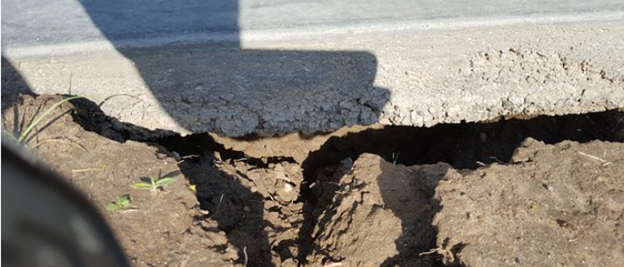Cracks, fissures, fractures, gaps, and breaks in your foundation happen in an assortment of contours and configurations. New home construction cracks usually result from the house settling the first year. The cracks are usually close to wall and floor corners. The longer portions of foundations are sometimes affected as well.
This is not a reason to be greatly alarmed; however, if cracks migrate becoming larger, longer, wider, and deeper, permitting water to leak or permeate the area, you need the best foundation crack repair contractor Edmonton, that you can trust to get your job done with excellent results. You never want to postpone doing the repairs because the damage will become worse and it doesn’t take long to do.
Cracks in foundations and cracked basement walls are typical due to soil expansion and contraction that homes and commercial buildings are constructed on. This results in the structure settling, creating cracks. We recommend that you inspect and check the areas often, measuring them for width, length, and depth, recording the data on a note pad with the dates of each measurement.
You might be wondering if you have definite foundation issues. To know soon, will save you time and money when you recognize and act promptly for:
Notable signs that you might have a waterproofing issue are:
If your home or commercial building soil was not, or is not graded properly, snowmelt and rain will sooner or later saturate the ground. This might go beyond the weight-bearing ability of the walls causing them to bow and/or crack. Clay soil is especially susceptible to contracting and expanding laterally with pressure on the walls of building structures requiring basement foundation repair.
Our foundation repair Edmonton team has seen it all over the years. We know what challenges you are most likely to have.
These cracks run all over the place. They can be partially horizontal, diagonal, and vertical, with other directions as well, and some with holes will appear.
You will find them in your basement floor, cracks in block foundations, garage floor, and outdoor sidewalks to your front door.
Keep an eye on them making sure water is not seeping in to cause even more damage.
Concrete contracts when it cures and are known as shrinkage cracks. Usually located in the mid-section of walls, they can run vertically or diagonally and are usually less than 1/8-inch wide, yet can grow larger in size.
Vertical foundation cracks are usually the most common. These go straight up and down and can have a slight diagonal movement within 30-degrees of vertical. These are not as serious as other crack directions in your home or commercial building.
These typically occur from the foundation settling and are quite common in new-builds during the first few years of construction. Luckily, the vertical crack is generally less expensive to seal. An epoxy or urethane material will be injected into the cracks. This assures you that the cracks are sealed and will not open or expand when the foundation settles.
With concrete block foundations, the crack will be near a corner usually wider than 1/8-inch. This problem is not caused by shrinkage suggesting a foundation issue that can be more serious. It will need to be inspected by us for the concerns with this type problem.
Diagonal foundation cracks are common forms of cracks. It usually is 30- to 75-degrees in angle running along your basement wall or foundation. Wider at one end than the other, it might be only a thin hairline crack.
Differential settling of your house or building is where one side of the foundation settles lower than the rest of the footing. The uneven tension triggers diagonal foundation cracking.
When a building structure is constructed on a hill, expansion/contraction of the soil under a section or part of the building can have differential settling. This crack issue will cost more to repair than a vertical crack.
After the cracks are sealed, it might be vital to find the reason for the differential settling to resolve the issue.
It could be an easy straightforward installation of new gutters for directing snowmelt and rainwater away from the foundation in Edmonton that can become flooded causing the soil under the foundation to shift.
Horizontal cracks run sideways and are the most serious kind for damaging your foundation and structural integrity. Water pressure from the outside wall foundation occurs more frequently with buildings having poured concrete foundations, brick, or concrete block foundations.
The soil pressure outside your home from heaving and contraction can cause your basement walls to bow.
Even more pressure from Edmonton’s heavy snowmelt and rain or flooding can produce critical and severe horizontal cracks needing immediate repair to avoid structural damage.
This problem involves the most extensive repairs that might include reinforcing your foundation, securing it, preventing damage later on.
Ramma Concrete Repair are experts with professional resolutions to your foundation or slab cracks. Your situation might be past the time for repairing. The investment you make for the solution will not add sufficient value to your home or office building.
While this is extremely rare, it happens at times when the foundation has entirely failed and collapsed and the building damage is irreparable.
We have seen these most serious foundation issues that we can investigate for possible remediation:
If the Edmonton, Canada foundation of your house or building shows any of the above signs, please contact us without delay.
When you want to have long-term results for your cracks and other aesthetic issues, we will be honored to identify, repair, and solve any of those you might have. If you have a failing foundation, sometimes filling the cracks won’t be enough.
Contact the Ramma team for foundation repair solutions that you need to keep your home strong, stable, and crack-free for years to come.
